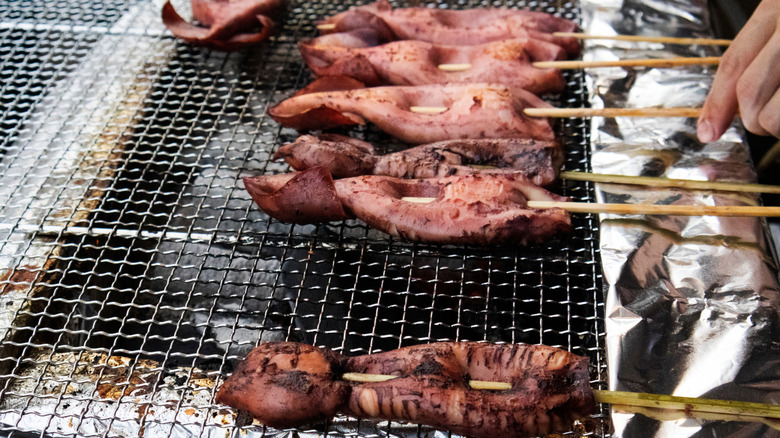Teriyaki Vs Hibachi: What's The Difference?
Both teriyaki and hibachi are delicious and well-loved facets of Japanese cooking traditions. The two are sometimes confused, especially since teppanyaki, the most popular form of hibachi outside of Japan, sounds so similar to teriyaki. However, the differences between them are real and contribute to their unique flavors.
Hibachi means "fire bowl" in Japanese and refers to the most common way to cook it — a cylindrical container of coals with a grate over the top to grill meats and vegetables. Teppanyaki, cooking in front of customers over a flat-top griddle, has significant Western influence and was popularized through trick-performing hibachi chefs at chains like Benihana. Hibachi employs a diverse array of ingredients with different seasonings and preparation styles.
Teriyaki, on the other hand, refers to both a preparation and a sauce. "Teri" means glaze or shine and "yaki" means grill. Composed of soy sauce, sugar, and mirin, teriyaki is a simple sauce that is brushed several times over meats and vegetables as they lay over a grated grill with traditional Japanese bincho-tan. It was originally developed as a flavorful, preservative marinade for fish but is now used on a variety of ingredients.
Taste differences between hibachi and teriyaki
Since their cooking methods are so different, both hibachi and teriyaki have their own flavor profiles. While there's great overlap in the ingredients used in both styles, hibachi's direct, high heat requires thin or julienned ingredients while teriyaki can use everything from whole chicken breasts to chunky skewers.
Hibachi of any kind relies on hot and fast cooking times. This keeps meats and vegetables juicy on the inside while the outside develops a golden brown coloring and rich flavor. It uses anything from soybean oil to animal fat to grease the flat-top. Seasonings vary wildly depending on where in the world you are and range from soy sauce to sesame seeds. Hibachi ingredients include cabbage, noodles, shrimp, steak and more. The only requirement for cooking something on a hibachi grill is that it's thin enough to cook all the way through without burning the outside.
Teriyaki is by no means a slow cooking process, but it uses radiant rather than direct heat. It's known for its sticky texture, sweetly charred taste, and versatility. The sugar in the sauce complements the richness of roasted meat, creating a juicy variety of different flavors. It's almost like a savory candy on vegetables, with plenty of salt and umami from the soy sauce forming a wonderful side dish.


